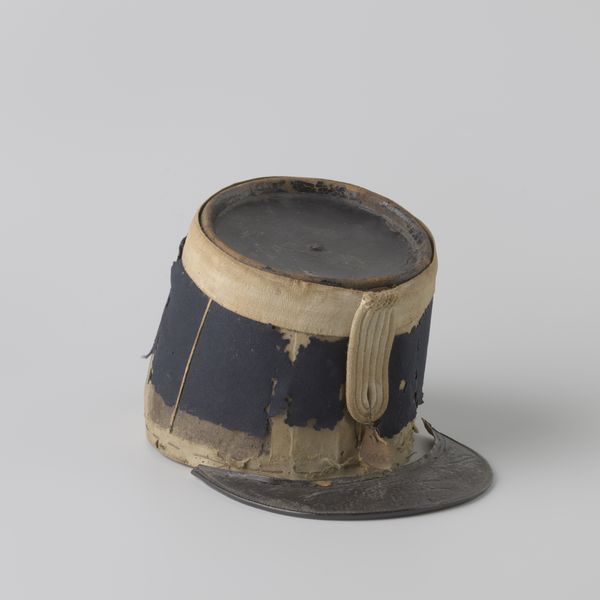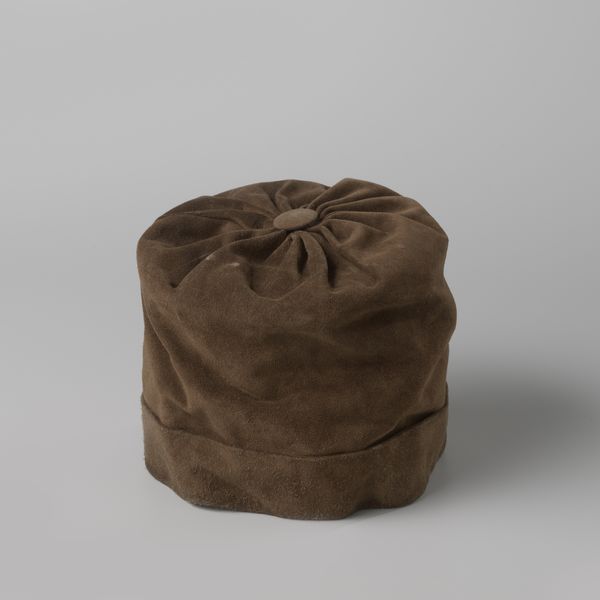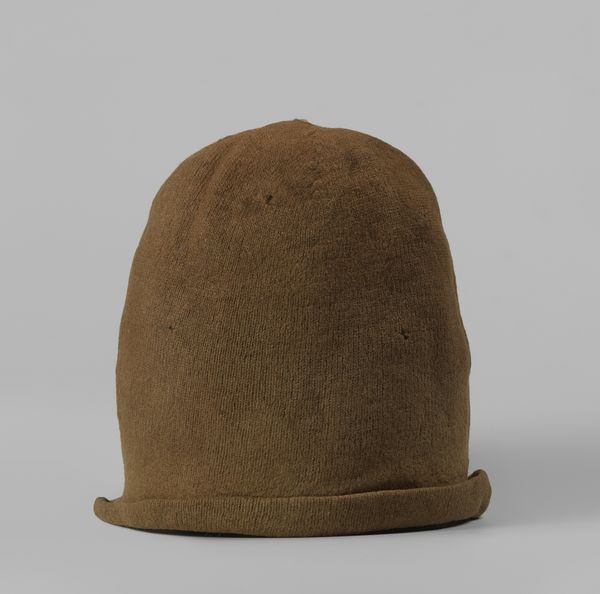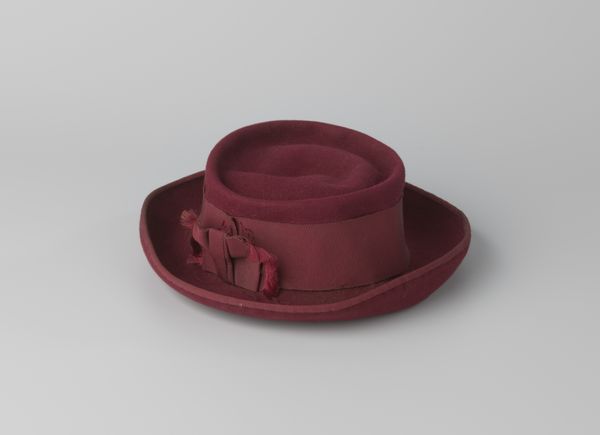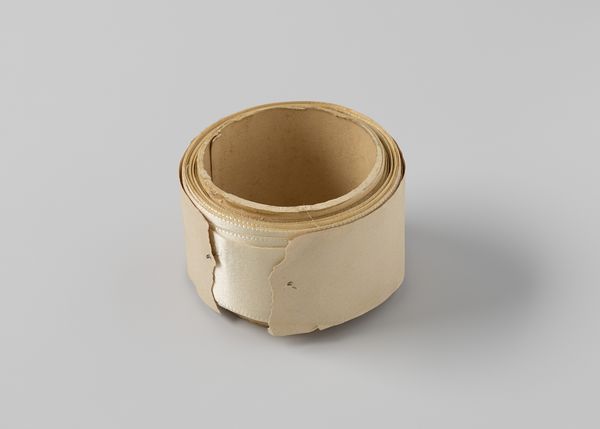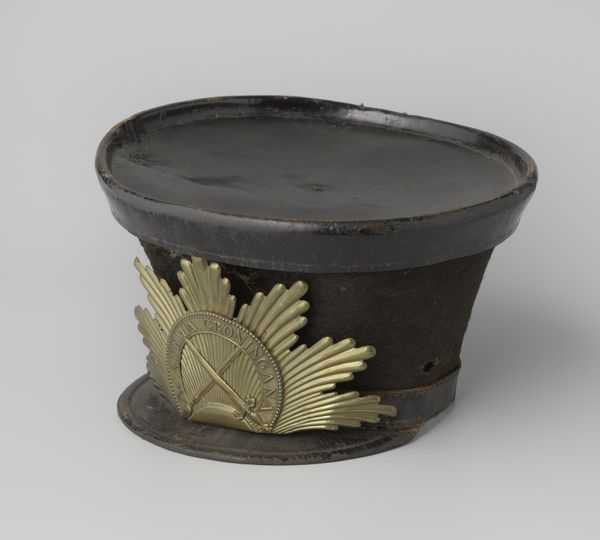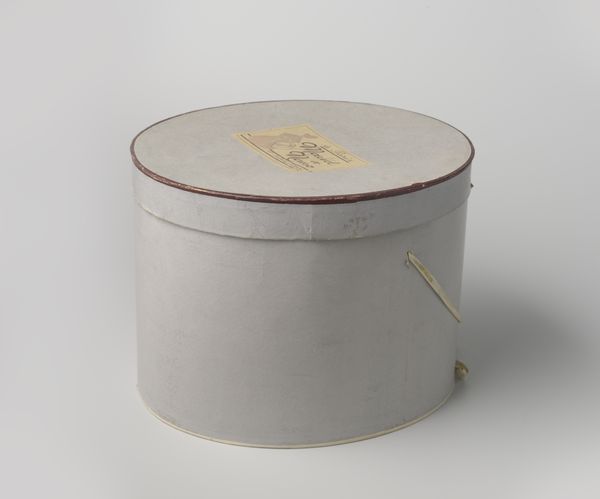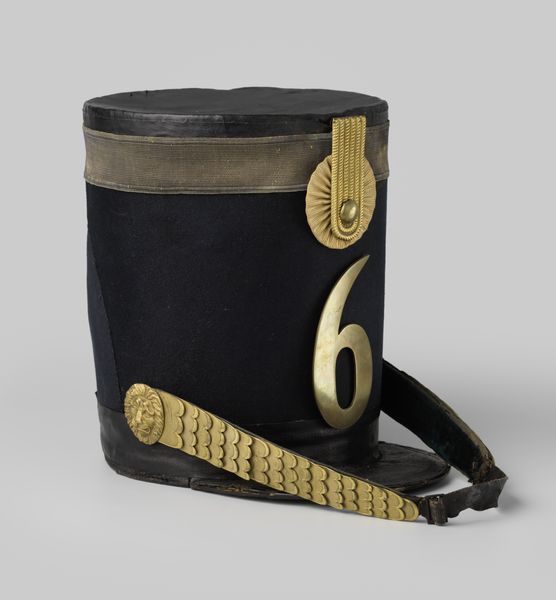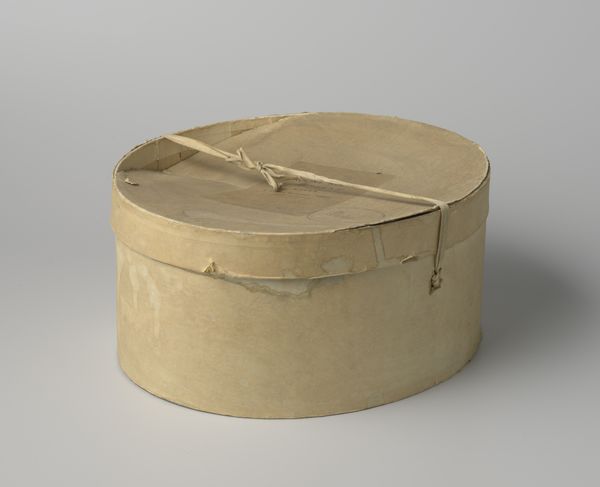
Pet van E.W. van Dam van Isselt, majoor-commandant van de vrijwillige jagers before 1830
0:00
0:00
photography
#
portrait
#
photography
#
academic-art
Dimensions: width 35 cm, height 30 cm, depth 29.5 cm, height 16.5 cm, width 17 cm
Copyright: Rijks Museum: Open Domain
Editor: Here we have a photographic portrait entitled "Pet van E.W. van Dam van Isselt, majoor-commandant van de vrijwillige jagers" before 1830, by L. Zimmerman. The first thing that strikes me is the focus on this hat - it's presented so starkly. How should we interpret this work? Curator: Consider the photograph as an object itself. Look at the materiality of it, the paper, the ink. Photography was still relatively new, its processes not yet fully standardized. This image presents the hat in great detail, perhaps elevating a mundane object to one of historical significance. Editor: You mean, thinking about it as something manufactured rather than simply a captured image? Curator: Precisely. The production and consumption of the hat itself matter too. What societal factors necessitated its creation? This headwear of E.W. van Dam van Isselt suggests more than personal style; it is connected with larger military structures and related modes of material exchange. This brings a class dimension as well. Editor: So, beyond the subject matter, we look at the creation process, the means of production, and the societal role of the object to understand the photograph? Curator: Yes! Reflect on the labor that went into manufacturing both the hat and the image. Someone sewed this hat, and someone else took this picture. By analyzing the photograph as a material object tied to broader societal systems, we start to challenge what "art" truly is, considering everyday materials imbued with social meaning. Editor: That really shifts my perspective. I was looking at it purely as a portrait, but seeing it as a manufactured item tells a more comprehensive story. Curator: It invites you to think critically about the connections between seemingly disparate elements – materials, labor, class, representation – that shape our understanding of culture and art.
Comments
No comments
Be the first to comment and join the conversation on the ultimate creative platform.
